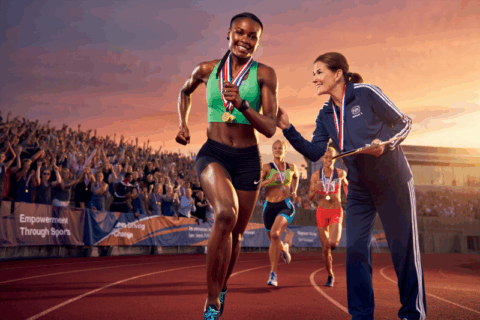
Visualization Enhances Athletic Success Through Focus and Confidence
Unlock Your Potential with Mental Imagery
In the highly competitive world of sports, physical skills alone do not determine success. Athletes across disciplines—whether in track, swimming, team sports, or combat sports—are increasingly turning to visualization techniques to gain a mental edge. Visualization, also known as mental imagery, involves mentally rehearsing athletic performance, which enhances focus, builds confidence, and ultimately boosts results.
The Power of Visualization in Sports Performance
Why Visualization Matters
Research from neuromarketing and sports psychology reveals that mental imagery activates many of the same neural pathways as actual physical practice. This means that visualizing successful performance can:
- Improve focus during training and competitions
- Increase confidence by mentally reinforcing positive outcomes
- Reduce performance anxiety through mental preparation
- Accelerate skill acquisition via mental rehearsal
Scientific Evidence Supporting Visualization
Multiple studies have shown that athletes who incorporate visualization into their routines outperform those who rely solely on physical practice. For example, a study published in the *Journal of Sports Sciences* found that mental imagery enhances strength, speed, and endurance. Olympic champions, such as Michael Phelps and Simone Biles, routinely visualize their routines to achieve peak mental clarity.
Effective Strategies to Leverage Visualization
1. Set Clear, Specific Goals
Imagine achieving specific milestones, such as crossing the finish line first or executing a perfect jump. The more detailed the visualization, the stronger its impact.
2. Incorporate All Senses
Engage all your senses to make mental imagery vivid:
- Visual: See your surroundings, your body position, the ball’s trajectory
- Auditory: Hear the crowd, your breathing, the sound of your footsteps
- Kinaesthetic: Feel the movement, muscle engagement, balance
3. Practice Regularly
Consistency is key. Dedicate 10-15 minutes daily to visualization exercises, ideally before training or competitions.
4. Maintain a Positive, Confident Mindset
Focus on successful execution rather than what could go wrong. Visualize yourself performing with ease, confidence, and control.
5. Combine Visualization with Physical Training
Use mental imagery to complement physical practice. Visualization maximizes your training efficiency and ensures mental readiness.
Visualization Techniques for Athletic Success
| Technique | Description | Best Use Cases |
| Visualization Scripts | Guided mental rehearsals using descriptive language | Preparing for complex performances |
| Progressive Relaxation | Combining visualization with relaxation to reduce anxiety | Pre-competition mental calmness |
| Playback Method | Mentally replaying personal bests or ideal performances | Enhancing confidence and consistency |
| Future Pacing | Imagining future successes to motivate ongoing effort | Long-term goal setting |
Overcoming Common Challenges with Visualization
| Problem | Solution |
| Difficulties maintaining focus | Practice in a quiet, distraction-free environment |
| Negative thoughts creeping in | Use positive affirmations during visualization |
| Lack of consistency | Integrate visualization into your daily routine |
FAQs: Boost Athletic Performance with Visualization
How long should visualization sessions be?
Typically, 10-15 minutes per session are sufficient. The key is consistency over duration.
Can visualization replace physical training?
No, visualization enhances but does not replace physical practice. It should be used as a complementary tool for optimal results.
Is visualization suitable for all sports?
Yes, visualization benefits athletes across all disciplines—endurance, strength, team sports, and individual events.
How quickly can I expect results?
While individual differences vary, many athletes report noticeable improvements within a few weeks of consistent visualization practice.
Final Thoughts: Embrace Visualization for Natural Athletic Success
By harnessing visualization techniques, athletes can naturally enhance their focus, build unwavering confidence, and achieve athletic success. Incorporate mental imagery into your training regimen today—it’s a powerful, scientifically-supported strategy to unlock your full athletic potential.
Take Action Now
Start visualizing your success before your next training session or competition. Remember, mental rehearsal is a critical investment in your athletic journey. Enhance your performance naturally by mastering visualization—your winning edge awaits!


